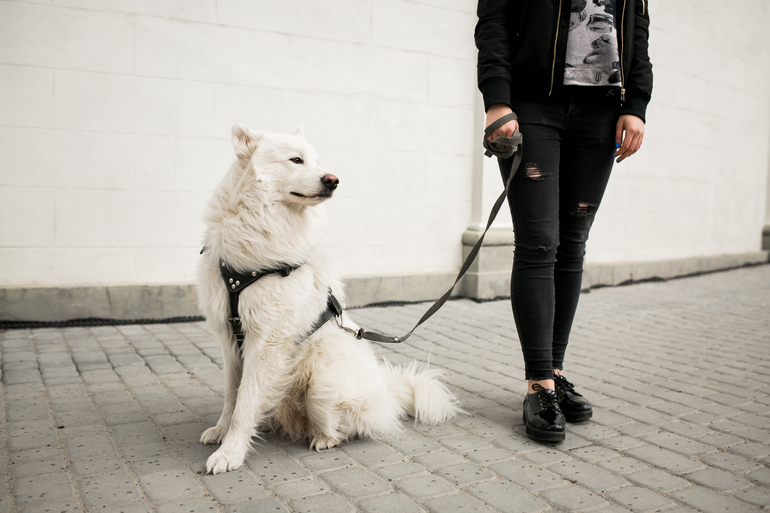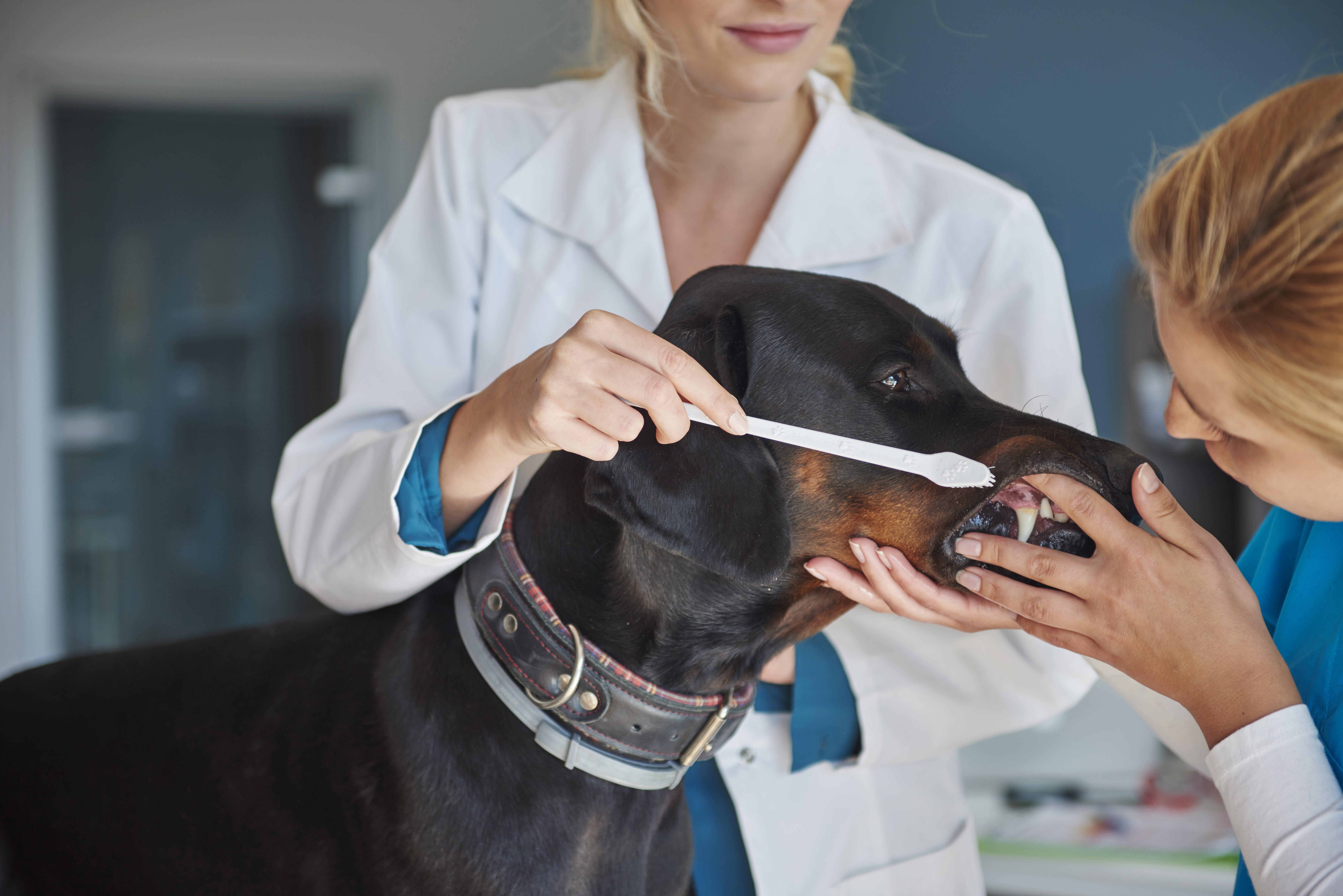
There are many questions surrounding the service animal community that still need to be answered... Public awareness of service dogs and their role in the lives of many people worldwide should be raised and misconceptions should be debunked.
Often service animals are perceived as creatures, whose status and role in society are poorly understood-what are they supposed to do, how do they do it, what are their rights? Since they are considered medical equipment and not pets, does this mean that they have unlimited access rights and are allowed to freely walk without supervision?

What Are Service Animals Trained to Do?
Service animals are dogs who undergo specialized training to learn tasks that are directly related to a person’s disability, whether physical or mental.
Service animals can be dogs only (including miniature horses, who are recognized in several U.S. states).
The tasks service animals perform depend on the person’s impairment and vary from individual to individual. It is not correct to associate service animals with physically noticeable disabilities only, as some of the tasks these dogs perform help mitigate the symptoms of mental/emotional/developmental disabilities, that may not be easy to recognize.
Considering their role and the training they undergo, service dogs are deemed medical necessity, and not pets and are entitled to public access. They are allowed to accompany their handlers/users to all places that are open for use by the public.
Public-facing businesses can not discriminate against physically or mentally impaired individuals. In case, an individual with a physical and/or mental impairment is accompanied by a service dog, the handler-dog team must be provided with reasonable accommodation. For example, this could mean seating the handler and their service dog in a designated area in case other customers are allergic to dog fur.
Do Service Dogs Need to be Leashed at All Times?
Yes, service animals must be under control at all times when in public. They have to be on a leash or otherwise tethered. The person who has control over the service animal and “handles” them, is in most cases, the service dog user-the individual who benefits from the performed tasks. In some cases though, the user may need assistance from a third party to handle the dog. In these situations, the handler and the user are different people.

Are There Exceptions to the Rule?
Yes! According to the Americans with Disabilities Act (ADA), service dogs are allowed to be off-leash, in cases where the leash or the tethering device interferes with the ability of the dog to perform the learned tasks.
The ADA states that if this is the case, the disabled individual must use signals or voice commands or otherwise effectively ensure that the dog is under control. The examples that are listed on the ADA website, the FAQ section, refer to returning veterans with PTSD, who need a service dog to help them enter unknown places, verify that there are no threats there, and return to the individual to notify them that it is safe to continue going.
If a disabled individual needs a service dog to retrieve items at a long distance, e.g. as a phone or medication, a long extendable leash may be used. It will help ensure that the dog is under control and won’t wander around.
Simply put- a service dog can be off-leash in public if this is needed for them to do their job as medical equipment. In all other situations, the dog must be on a leash.
Leash Training
Leash training is included in the basics that every service dog needs to know. The training process always starts with basic obedience, i.e. “sit”, “stay”, “name”, and “come”. It also encompasses extended obedience such as focus training and “heel”, which is absolutely essential for service animals.
Calmly walking on a leash and being able to maintain their focus on the handler, are among the most important tasks a service animal must be able to do. Leash training has many aspects that should be considered such as what type of leash would be most suitable for the dog, based on their age, size, and obedience skills, when and where to start leash training, when is a dog ready to go to more crowded places…?
Being properly trained to walk on a leash means that you feel confident in your service dog’s skills to navigate various types of surroundings. It helps ensure that your loyal paw partner won’t pull on a leash or try to jump on another dog or a person who comes by. Along with focus training, leash training teaches dogs to remain calm when walking by their owners’ side.
Calmly entering public settings is a skill that all service dogs should possess.

Can Service Animals Be Excluded from the Premises?
Since service animals are medical necessity and not pets, they can not be excluded from the premises, even if these run a “no pets” policy. As mentioned above, reasonable accommodation must be provided. This means that as long as the presence of the animal does not drastically alter the nature of the services or the goods that are offered. The ADA states:
“The ADA does not require covered entities to modify policies, practices, or procedures if it would “fundamentally alter” the nature of the goods, services, programs, or activities provided to the public. Nor does it overrule legitimate safety requirements. If admitting service animals would fundamentally alter the nature of a service or program, service animals may be prohibited. In addition, if a particular service animal is out of control and the handler does not take effective action to control it, or if it is not housebroken, that animal may be excluded”.
In What Cases Can the Presence of a Service Animal Fundamentally Alter the Nature of the Offered Services/Goods?
According to the ADA, service animals can be excluded:
-from specific areas at the zoo, if natural prey or predators of dogs are displayed;
-from specific areas at boarding schools, designed for students who are allergic to dog fur;
-if a service animal poses a direct threat to the health or safety of others, has a history of disruptive behavior, or is not under the control they can be excluded.
However, in the last case, if an animal is excluded due to their behavior, staff must still offer their goods or services to the impaired individual, even if the animal is not present.

Is a Barking Service Dog Considered “Not Under Control”?
It depends on the situation.
In general, service dogs are not allowed to bark or otherwise cause disruption. Since they undergo specialized training, including basic obedience, specific service dog tasks, and public manners, they must be able to control their impulses, remain focused on their user/handler, and behave well in public.
Nevertheless, when barking is a task that a service animal performs to assist their owner, then it is not considered disruption and is allowed. Service dogs can be trained to bark to notify their disabled owners of an oncoming medical episode, or a specific factor in the surroundings, such as a potential threat or an obstacle on the way.
Another situation, where a service dog is allowed to bark, is when barking was provoked or if the dog barked once.
Unfortunately, there are people who do not understand the importance of these animals or how to behave around them. Raising awareness in the public of the role of service animals is essential for society, so it can function properly and respectfully!
Service animals should not bark continuously in places that need to be quiet, such as libraries, theaters, or lecture halls.
Are Service Dogs Required to Wear Other Types of Gear Besides a Leash?
The ADA, as well as the laws in other countries such as the UK, do not require service animals to wear identification or training gear. A service dog can not be excluded from a premise, because they do not wear a vest, harness, or a tag.
However, due to the increasing number of fake service dogs, many employees feel more comfortable when service dog handlers provide them with documentation as proof of the legitimacy of their service dogs or when training gear is available. Therefore, carrying a medical letter, a certificate as proof of training, or an ID card, can come in handy along with putting a vest or an ID tag on the dog.
Being able to explain what tasks your service animal has been trained to perform for you, is what will help you when accompanied by them in public and confronted by employees. This is the information that is legally allowed to be required per ADA.












